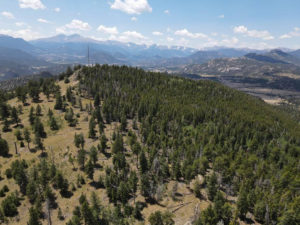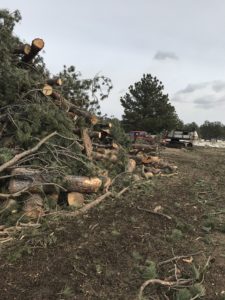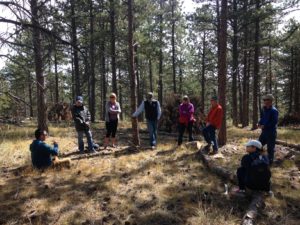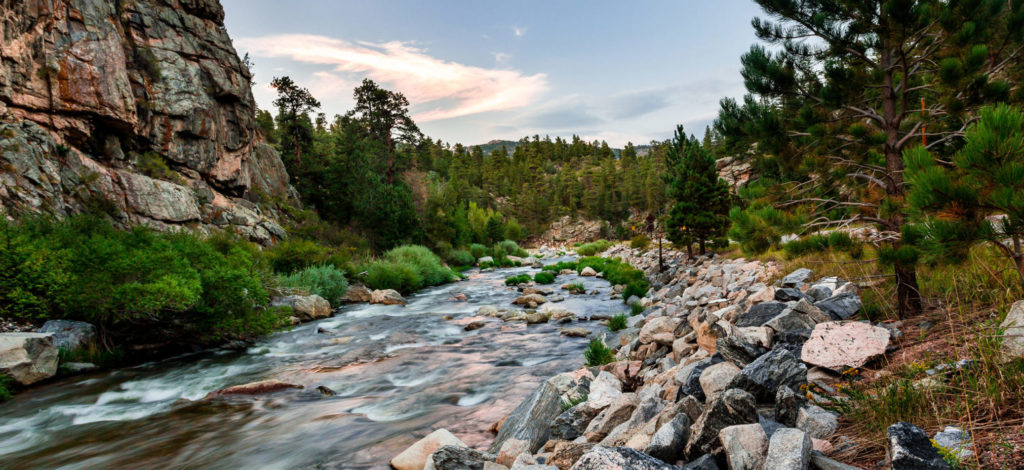Forest investments must be continuous

Despite the two largest wildfires in Colorado’s history burning more than 400,000 acres in Northern Colorado in 2020 there is still plenty of work that needs to be done to prevent the occurrence of future severe wildfires.
The Colorado State Forest Service (CSFS) reports approximately 10% of Colorado’s 24 million acres of forest are in urgent need of treatment to address forest health, wildfire risk and watershed protection threats, at a cost of approximately $4.2 billion.
“Current and emerging conditions are threatening the health and resiliency of forests in Colorado. There is a solution, but it requires an investment in our forests that cannot be sporadic. Rather, that investment must be focused and strategic, cross-boundary and collaborative”, says Michael Lester, State Forester and Director of CSFS.
Forest investments must be focused
 Here in Northern Colorado the Arapaho and Roosevelt National Forests and Pawnee National Grassland encompasses 1.5 million acres. The Canyon Lakes Ranger District of the Roosevelt National Forest alone is 650,000 acres. Between the impacts of COVID-19 and the unprecedented 2020 wildfire season across Colorado there were few federal fuel treatment activities reported in 2020.
Here in Northern Colorado the Arapaho and Roosevelt National Forests and Pawnee National Grassland encompasses 1.5 million acres. The Canyon Lakes Ranger District of the Roosevelt National Forest alone is 650,000 acres. Between the impacts of COVID-19 and the unprecedented 2020 wildfire season across Colorado there were few federal fuel treatment activities reported in 2020.
The District is working hard to make up for lost time and is currently proposing multiple forest management activities, including mechanical timber harvesting, on up to 3,000 acres in the Roach Vegetation Management Project, located approximately 65 miles northwest of Fort Collins. This proposed project aims to reduce fuels on lands with declining forest health from mountain pine beetle and dwarf-mistletoe infestations.
“I think it’s a matter of putting the Cameron Peak Fire in the context of the larger watersheds. It was of course a huge fire at nearly 209,000 acres but there is still a lot of forested area remaining within the watersheds at risk of high-severity wildfire. That’s the main take home for me, the Cameron Peak Fire will certainly play a role in reducing future wildfire risk, but there’s still a lot of work to do to protect our water resources and other values.” explained Rob Addington, Forest Program Director with the Colorado Nature Conservancy.
Forest investments must be collaborative
Peaks to People’s Big Thompson Initiative is a critical collaborative effort between multiple private and public agencies. Together we are working to restore forest health, prevent catastrophic wildfires and protect water supplies in Northern Colorado. Big Thompson Initiative partners include the Colorado State Forest Service, The Nature Conservancy, the Big Thompson Conservation District, the Colorado Forest Restoration Institute, Larimer County Department of Natural Resources, the Brendle Group, the Center for Collaborative Conservation, Northern Water and the Gates Family Foundation.
Through this initiative we will invest $67 million, through new and leveraged funds, over the next 10 years to restore 28,000 acres of forests in the Big Thompson to a healthier state. Our investments will provide many other benefits too, including the protection of 17,000 acres of critical wildlife habitat, 2,000 acres of parks and open space and 13,000 homes from the devastating destruction of severe wildfires.
During the 2020 wildfire season the Big Thompson watershed was flanked on the west by the East Troublesome fire and on the north by the Cameron Peak fire, yet our priority areas were left relatively unchanged. We can prevent massive wildfires of this magnitude from happening again through continued collaboration and strategic investments. We have a lot of work to do but together we can protect the natural treasures that make Northern Colorado beautiful and vibrant.
